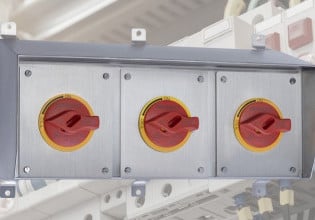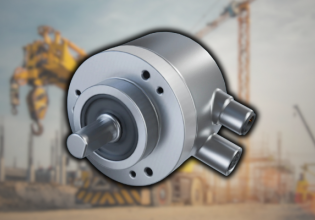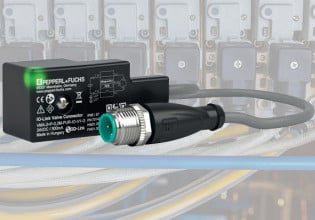The Rise of Electromechanical Actuators
Recently, there has been an increasing demand for electromechanical actuators as they may be beginning to replace hydraulic and pneumatic actuators.
In a previous article, we looked at different types of actuators and their relative advantages and drawbacks.
How can electromechanical actuators help with industrial automation?
Pneumatic and Hydraulic Actuators Still Play Critical Role
Actuators are devices that perform some form of a mechanical motion by using a large energy reserve controlled by some external signal.
For example, a pneumatic actuator uses compressed air as a source of energy to push a piston when that air is allowed to enter the piston chamber.
Traditionally, industrial processes were primarily mechanical using timing gears to control processes, which is why hydraulic and pneumatic actuators were very ideal.
Eventually, electrical control systems started to dominate the industry a bit more. While pneumatic and hydraulic systems are great for their specific uses, they are required to be controllable via an electrical signal.

A close-up look at a pneumatic actuator.
Generally speaking, the only efficient method for producing mechanical motion from electricity is with the use of electromagnetism. Most, if not all, hydraulic and pneumatic actuators which can be controlled via an electrical signal require either a motor or electromagnet to control the flow of air and fluid.
Both pneumatic and hydraulic actuators have reasonably good repeatability and are capable of handling heavy loads. But despite these two technologies being very established they are slowly losing the fight to electromechanical actuators.
Advantages of Electromechanical Actuators
Electromechanical actuators are based on electricity, which is the same mechanism that drives computers. This means that a PLC which produces electrical signals only requires an amplifier circuit to directly control an electric motor with no need for energy conversion stages and therefore reducing complexity.
Unlike other commonly used actuators, electromechanical actuators are more energy-efficient being as high as 80 percent whereas other systems such as hydraulic are only 44 percent.
To understand this, we need to consider the energy stages between the initial energy production and the final application of that energy.
In an electromechanical system, the current is passed through an inductor which interacts with a magnetic field to produce mechanical motion.
Since there are no conversion stages between the electrical energy source and the resulting mechanical motion, there is no energy loss due to conversion.
However, other sources such as heat can be problematic.
Systems based on hydraulics require multiple stages, including the initial pressure generation which requires an electric pump and the friction of the pipes against the fluid.
It is important to consider that appropriately sized electrical cabling is incredibly efficient in transferring large amounts of power.

Electric Linear Actuator from Parker Hannifin. Image used courtesy of Parker Hannifin.
The energy efficiency of electromechanical actuators also means that they dissipate less heat than their fluid counterparts. While heat can be a problem for mechanical reasons (expansion and pressure etc.) it can also be a serious safety concern.
Because hydraulic systems are under pressure, they can potentially explode releasing hot liquid in all directions. Any works nearby would, therefore, be at risk of serious burns which is where electromechanical actuators come in.
While electromechanical actuators can become hot and cause contact burns, they do not contain fluid under pressure thereby making them inherently safer.
Safety is another area of concern for traditional actuators as these systems can retain their pressure even when switched off or if a blockage should arise.
Such systems are also arguably more complex to maintain as they require fittings that can handle high pressures, temperatures, and be air/fluid-tight.
While electrical systems can require large cabling, they are under no such pressure and forming electrical connections far easier than those found in hydraulic and pneumatic systems.
Electrical systems can also be safer to perform maintenance on assuming correct isolation procedures are taken and capacitors are discharged. Unlike their hydraulic and pneumatic counterparts, as soon as the power from a cable is removed it is no longer charged.
While all of the above advantages make using an electromechanical actuator a strong candidate the most important factor is that their electrical nature allows them to have the highest repeatability, reliability, and accuracy of any other actuator technology.
Most electromechanical actuators are based on motors, usually a stepper motor. This means that the number of steps taken by the motor is known and therefore, can be represented in a numerical term.
Electromechanical Actuators Still Improving
Electromechanical actuators are a strong contender against other actuator types, but they are not perfect and do suffer from some issues. Electromechanically, actuators are more expensive than their pneumatic and hydraulic counterparts, mainly due to the size of motor and gear systems required.
Electromechanically actuators also cannot be used in hazardous environments for a few reasons.
The first is that hazardous environments can be corrosive to electrical connectors which can result in poor connections and sparking. The use of electrical motors in explosive environments also increases the risk of ignition from sparks caused by commutators or electrical surges.
Electromechanical actuators can also be heavier than their counterparts as they often need to integrate magnets, coils, and gears. Pneumatic systems, for example, are an empty cylinder with a piston that simply needs compressed air.
The electromechanical actuator has greater accuracy and they can be a more suitable choice for precision engineering. Their inability to operate in hazardous conditions means that they will never be able to be integrated into every unique environment.
Electromechanical actuators are an emerging actuator family that has many advantages over their mechanical counterparts.
Which kind of actuators do you use more often?
Featured image used courtesy of Neff Group Distributors.






